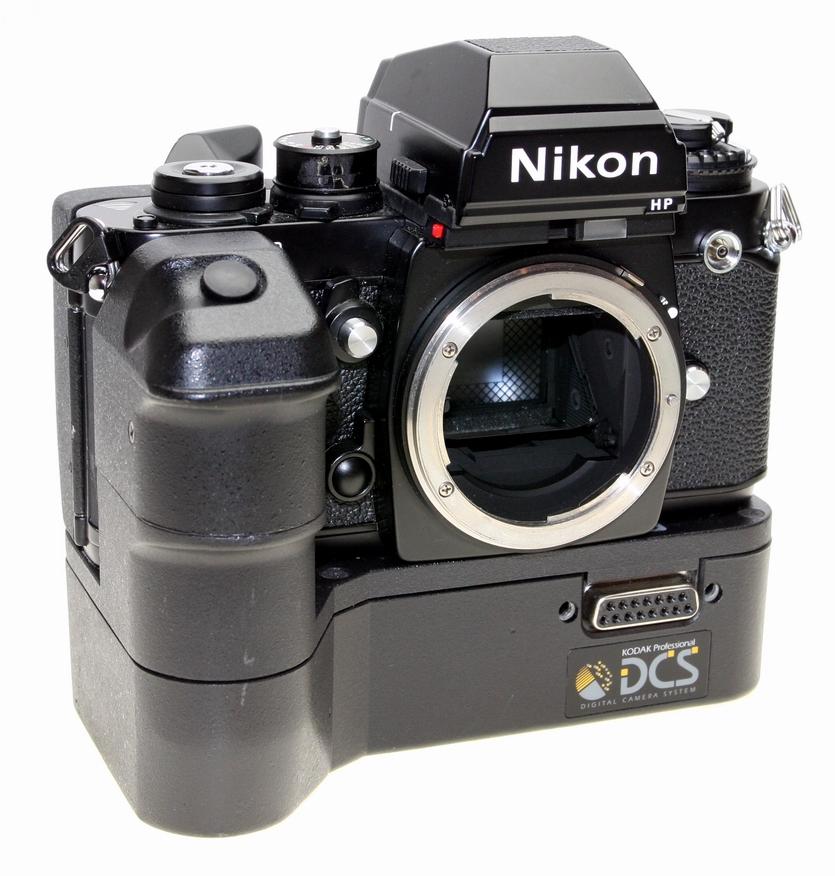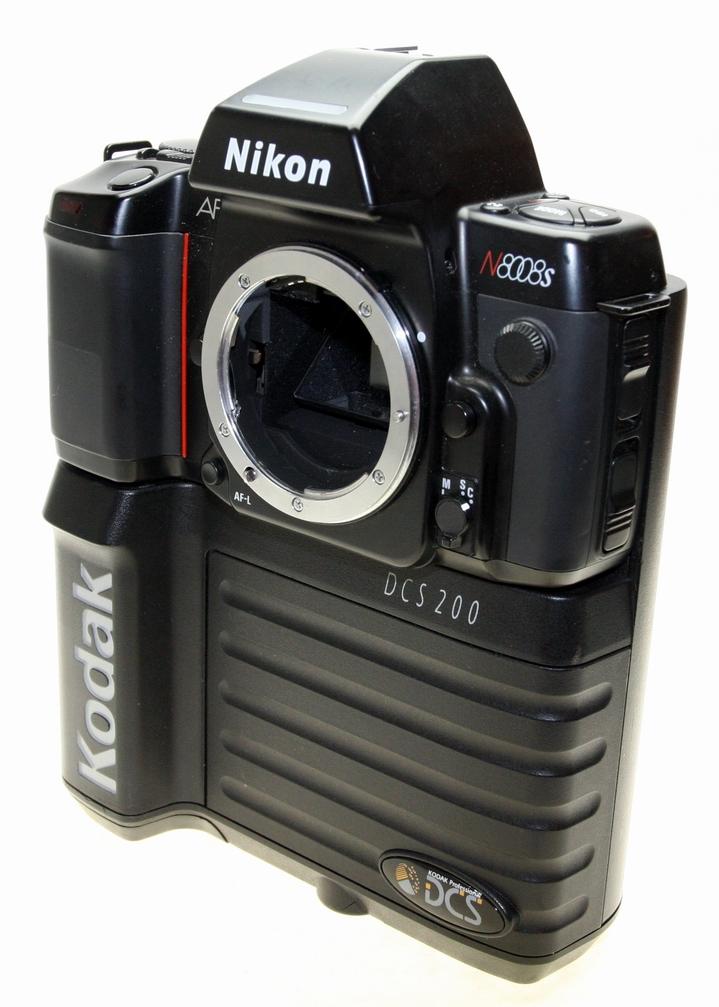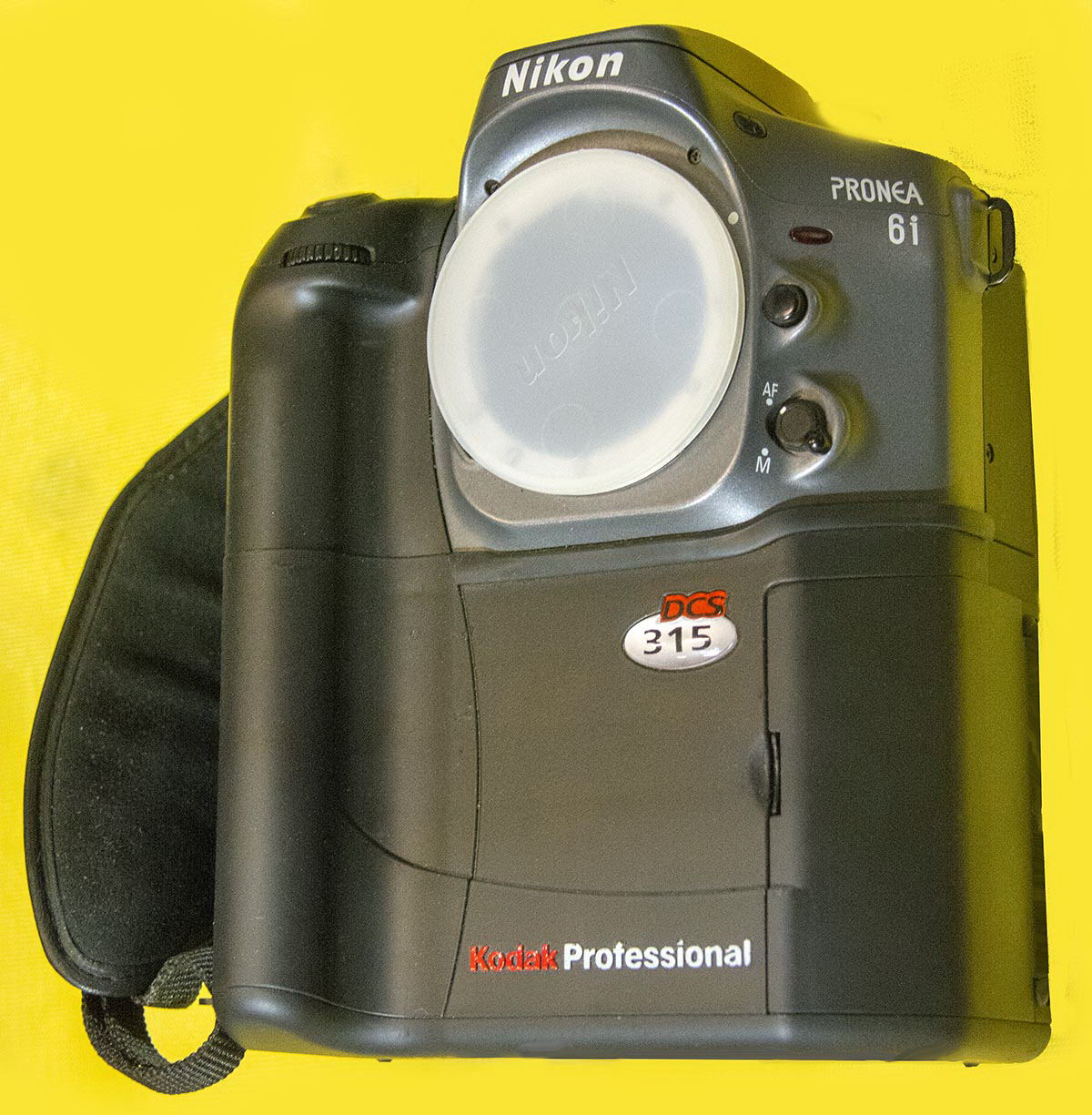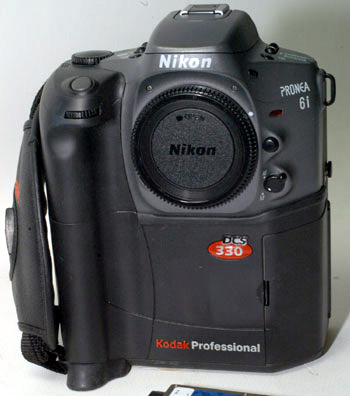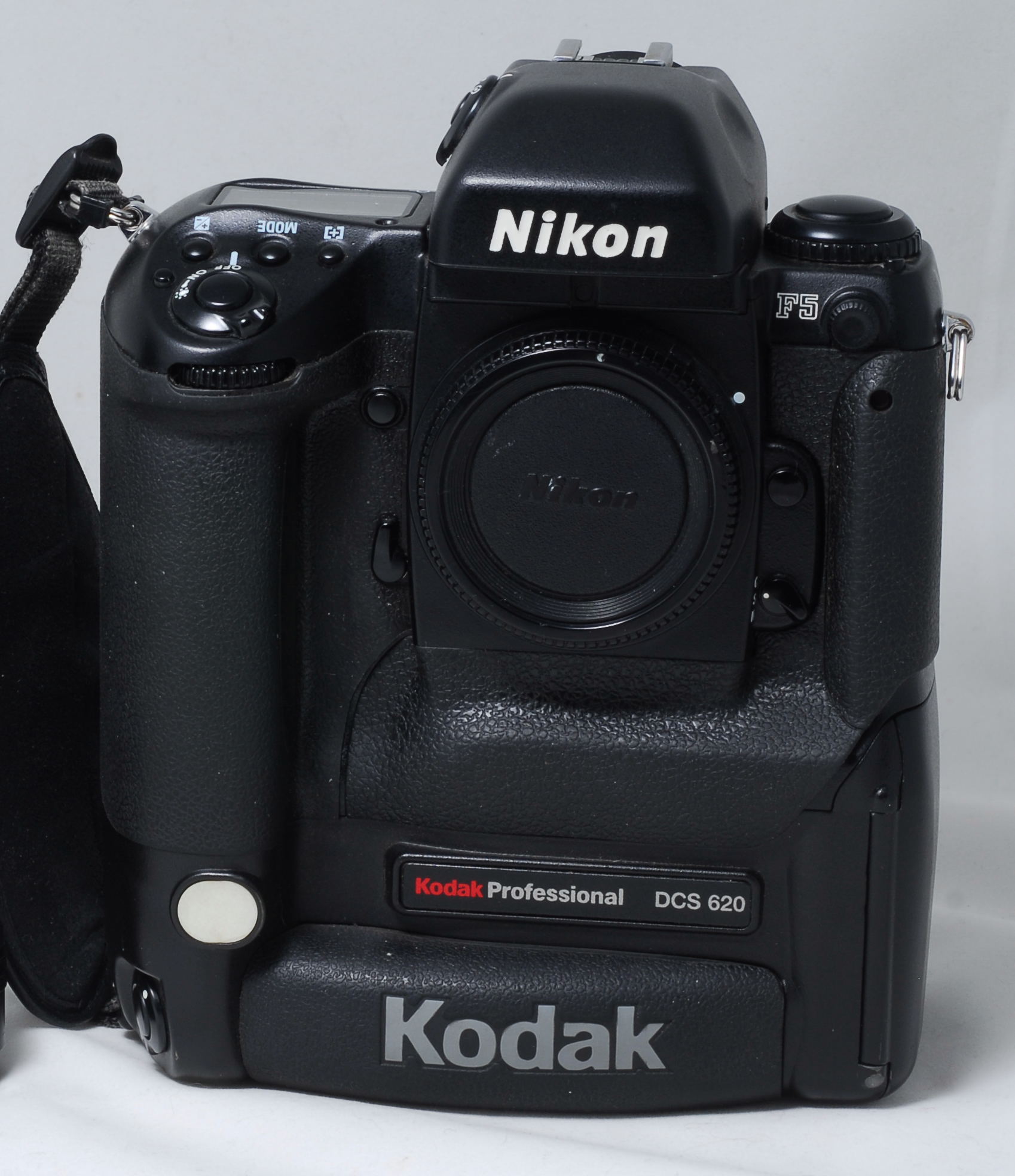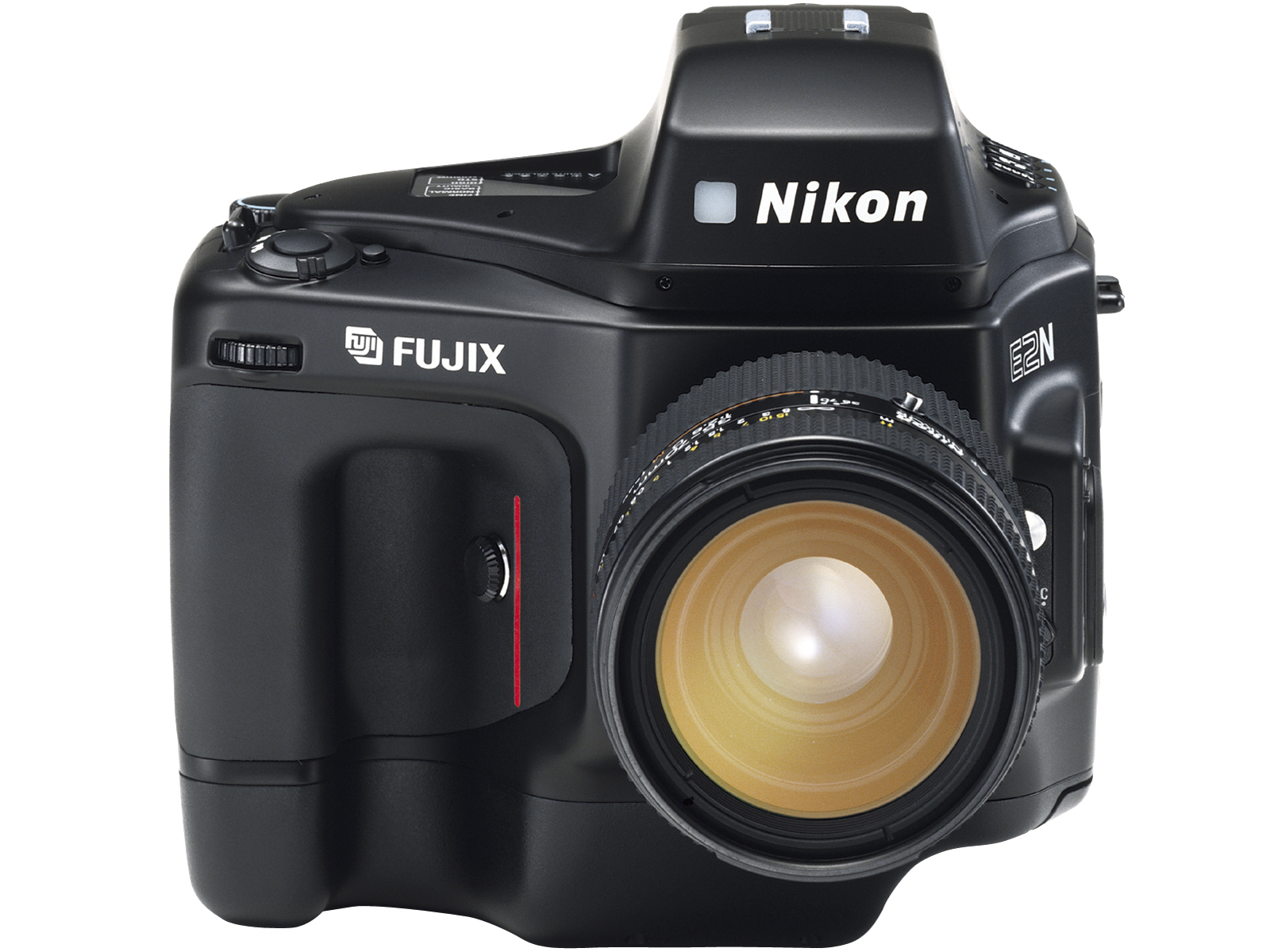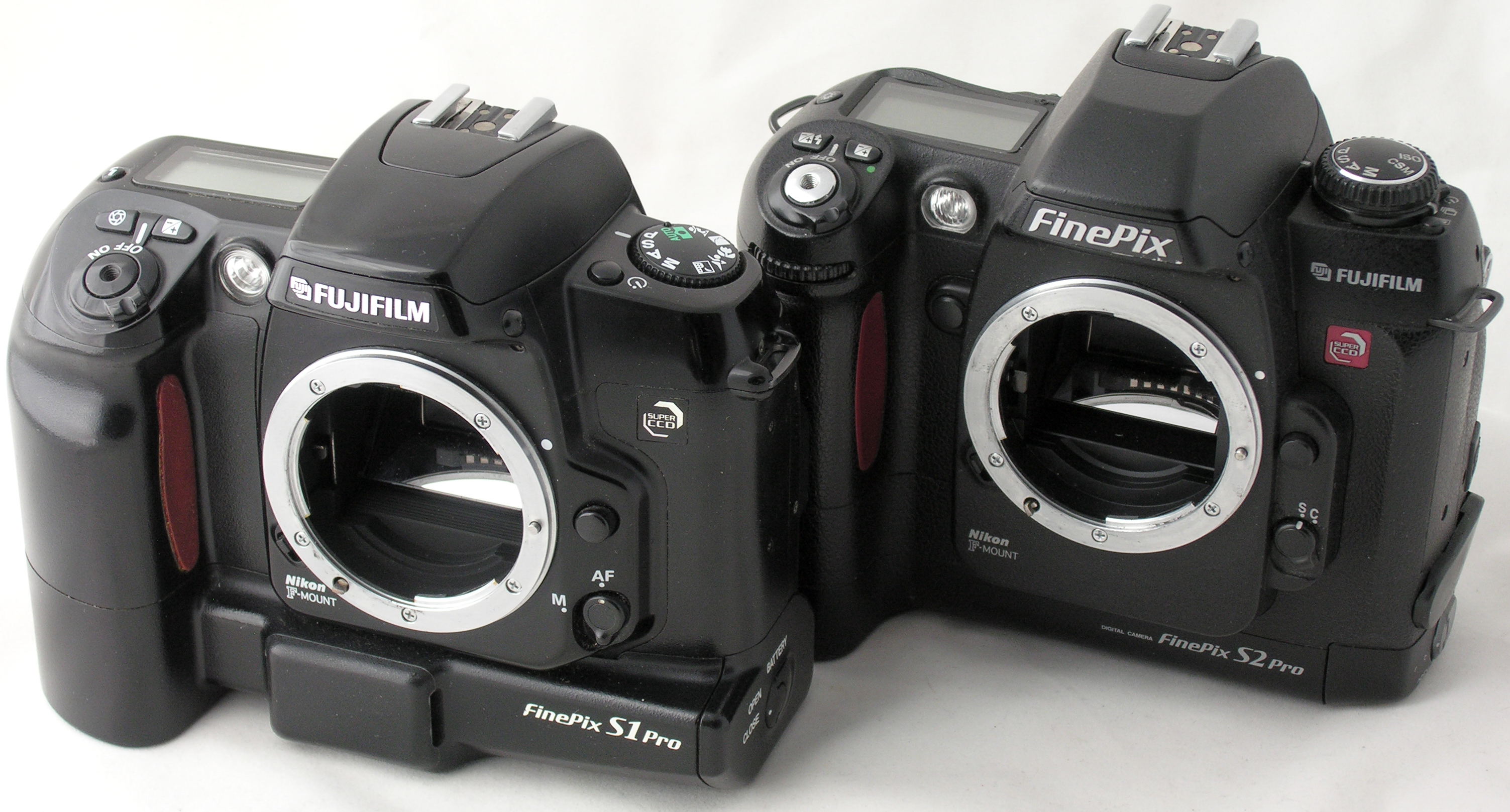Nikon Fuji/Kodak digital SLR cameras
The very first digital SLR prototype (with a 1.6/6 mm lens), produced by Nikon Corporation, was shown at the 1986 Photokina Exhibition in Germany, followed by a serious ´Still-video´-camera, the Nikon QV* 1000C in 1990. This very expensive - and nowadays rare - camera has a 2/3 inch CCD with maximum resolution of a mere 380,000 pixels and a separate lens mount. Via an adapter (QM*-100) other Nikkor lenses can be fitted. Only two lenses were made available, the QV-Nikkor 1.4/10-40 mm. (equiv in 35 mm = 50 - 150 mm.) and QV-Nikkor 2/11-120 mm. (equiv. = 50 - 450 mm.). At the time of its introduction the camera had the world's highest ISO-setting of 1600 ! It was able to register images at the ESCC-standard in Single mode, Continuous mode ( 4 fps) and CH (20 fps) at 1/1000 sec. when the mirror was locked up. Additionally a photo-transmitter (QV-1010T) was supplied. * QV = quick vision; QM = quick mount For detailed information on the early Nikon digital experiments the website of the Norwegian Nikon photographer and collector Jarle Aasland may be interesting. Two film producing giants, Fuji and Kodak, introduced digital single lens reflex (SLR) cameras, making use of Canon and Nikon camera bodies.
Kodak started early 1989 with the production of a digital camera back for the regular Nikon F3. Kodak named its product Digital Camera System (DCS). The Nikon F3 received the name DCS 100 (see above). The poor photographer had to pay an enormous amount of money but had to carry, too, a complete desk top PC in his backpack as memory cards didn't exist yet. The PC was connected to the Nikon F3 via a cable; all images were stored on the hard disc of that PC. In 1990 and 1991 Kodak introduced some variations of this design (colour and monochrome sensors), but all digital backs had an output of 1024 x 1280 pixels.
Kodak produced more digital camera backs for various Nikon cameras. The DCS-200 series - anno 1992 - was based on the Nikon F-801s/N-8008s (see above), and on the basis of the Nikon F-90s/N-90s Kodak introduced in 1994 the DCS-400 series (see above). The back and the battery pack is one unit replacing the standard back of a Nikon SLR. Only the pin at the top of the upper film rail has to be removed. Surprisingly the unique Nikonos RS was converted in 1996 into the DCS 425 and (in 1997) into the DCS 435.
Kodak also used in 1999 an APS camera - the Nikon Pronea 6i/600i - for its DCS-315 and DCS-330.
The Nikon F5, that became the basis for the Nikon D1-series, was used by Kodak in 1999 to create the DCS-620 and DCS-660 and - in 2002 - the DCS-720 and DCS-760. The removed Kodak digital back shows a 'normal' Nikon SLR, which could be converted back to a film SLR: just place a regular film back and battery holder plus a battery compartment door and replace the little pin on top of the upper film rail. That pin 'tells' the internal camera computer that a film is loaded. Finally in 2002 Kodak introduced the Kodak DCS Pro 14n based on the Nikon F-80/N-80. The crop factor of the above cameras was relatively high (up to 3 x); some cameras were produced for infrared photography.
Together with Fuji Nikon produced the digital reflex camera Nikon E2 (aka Fuji DS-505), technically based on the Nikon F4, that was introduced at the 1994 Photokina. A little bit faster version was the Nikon E2s (aka Fuji DS-515). Late 1996 the Nikon E2N (see above) and E2Ns and in the summer of 1998 the Nikon E3 and Nikon E3s were introduced. The very high prices and rather bulky body didn't made these camera a great success. The Fuji cameras mentioned hereto had no crop factor.
On basis of the Nikon F-60 Fuji introduced in early 2001 the Fuji Finepix S1, in 2002 the Finepix S2 and in 2004 the Finepix S3 on the basis of the Nikon F-80 and in 2006 the Finepix S5 on the basis of the Nikon D-200. All cameras are featuring the Fuji Super-CCD sensor of 6 Mp.; the S5 has a 12 Mp. sensor.
|
